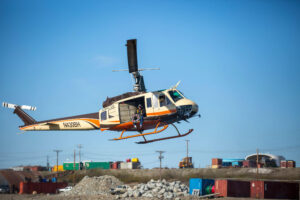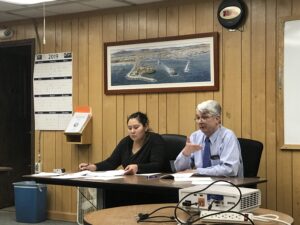Notice of building move today at 4pm: Q Trucking Company will be moving a 26’ wide single-story home… Due to its significant size, we ask that you yield to the pilot cars and the load itself should you come upon us during our travels, and move off the roadway until it is safe to pass.
This is from a public service announcement recently heard on KNOM. In Nome, where lumber can be hard to find and afford, houses are often re-used. Still, it’s not every day a whole house moves down the street!
KNOM is no stranger to this custom. In fact, the second floor of KNOM’s first station building is now a home in the Icy View “suburb” of Nome.
Image at top: The first KNOM radio station building. The second floor is today part of a family home in Nome. Photo taken by Bro. Norman Berger, FIC, in the early 1980s.





